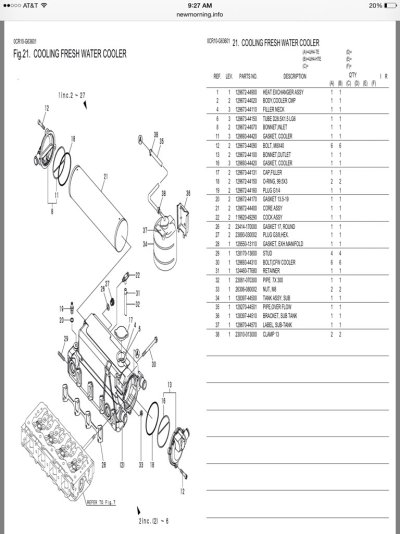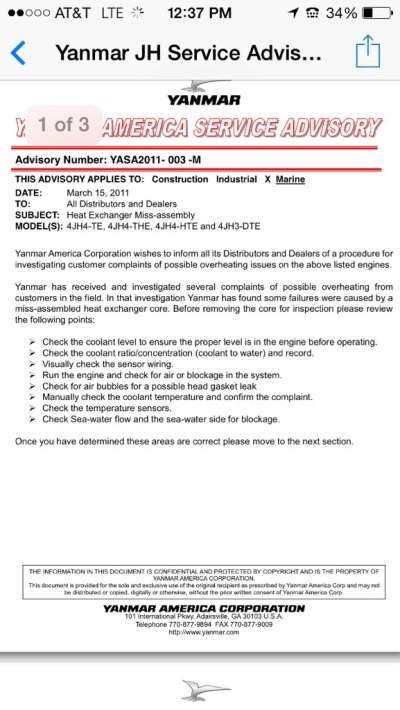It looks like Yanmar has expanded their list of approved coolants somewhat, but it is still quite specific. I received
this memorandum from Mac Boring last year:
TO: MARINE DISTRIBUTERS
COOLANT ADDITIVES
After testing some popular coolant/anti-freeze solutions, we have reached the following recommendations. It was not possible to test all brands on the market, so there may be some solutions that are acceptable but have not been tested. However, caution is advised if using other than approved brands.
Regardless of the recommendation of the coolant/antifreeze manufacturers it is YANMAR'S requirement that the solution is changed every 500 hours (On the YANMAR Model 6LP 250 hours) or once a year whichever comes first. We do not recommend any other additives be added to the cooling system. Purified or distilled water mixed with the approved coolant/anti-freeze is the only protection approved by YANMAR. Concentrations of the Enix-ture should follow the recommendations of the manufacturer. The coolant/anti-freeze must be compatible with aluminum.
Advantages of this type of coolant:
- Improved water pump life due to reduced water pump seal wear resulting from fewer abrasive dissolved solids.
- Reduces hard water scale.
- Offers excellent protection against pitting corrosion caused by cylinder liner cavitation.
- Better heat transfer than conventional coolants with regular SCALE additions.
- No silicate gel formation during use or storage.
- Outstanding hot surface aluminum protection.
- Superior protection in high operating temperature conditions.
- Effective, long-term corrosion protection for aluminum, brass, cast iron, steel, solder and copper alloys.
The coolant/anti-freezes that have been tested and approved are shown below:
- Texaco Long Life Coolant Anti-Freeze both regular and pre-mixed Product codes 7991 and 7998. This product is available in gallon containers, drums and bulk. It is recommended that the cooling system be drained and flushed before filling. Only Texaco Long Life Coolant should be used for top-off. This product has a much longer shelf life than conventional coolants provided the integrity of the container is maintained. For additional information and availability contact Texaco at 1-800-782-7852.
- Havoline Extended Life Anti-Freeze/Coolant. Product code 7994. This product is available through Texaco gas stations, Procedures are the same as with Texaco Long Life Coolant Anti-Freeze.
- Dex-Cool Long Life Coolant. This product is available through GM service centers worldwide.
- Prestone Extended Life Coolant. Product code AF888. If the above coolants are not readily available, Prestone Extended life coolant is satisfactory.






 Thank you!
Thank you!